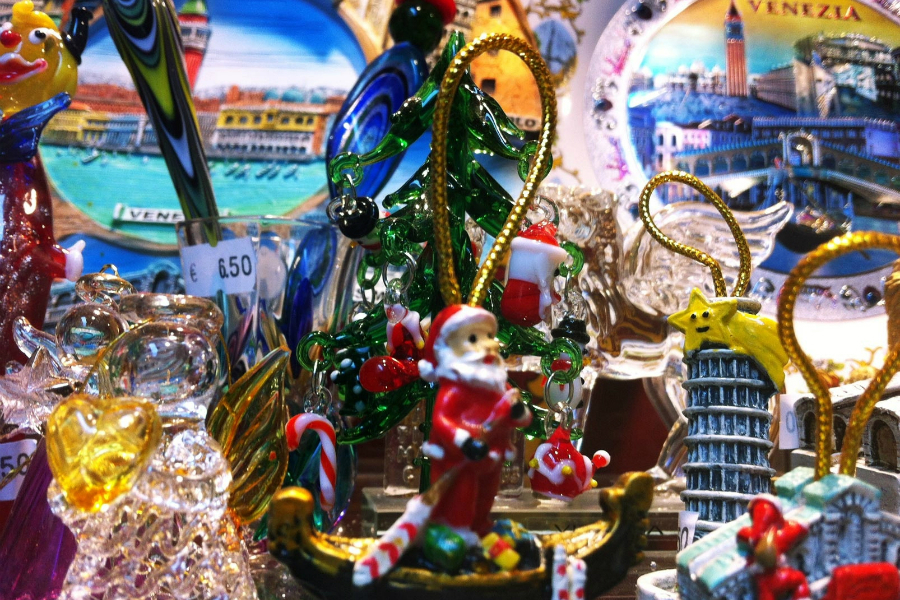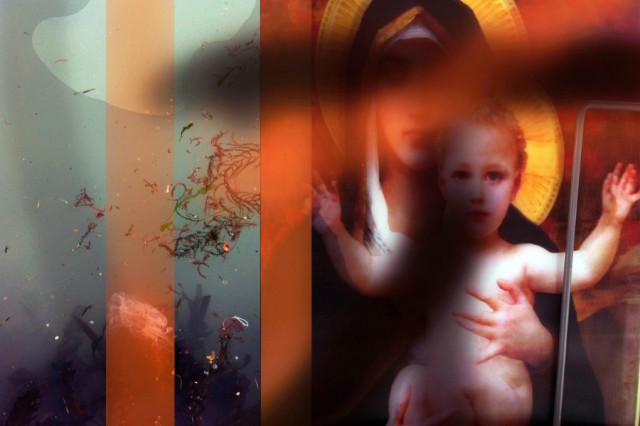Look And Look Again: David Ferry

Ever compared Venice to Blackpool? Stephen Clarke takes a closer look at the aesthetics of the two cities through David Ferry’s elusive and mischievous photomontage…
Upon entering a strange place, the visitor is disorientated. He looks for key markers that can act as signposts to help him find his way. These markers are taken from his past experiences, giving shape to his perceptions. The city of Venice is both known and unknown to many of us. A site of heritage and tourism, its significant features have been depicted continuously by artists, writers, and filmmakers, suggesting a complete view.
However, made up of canals and alleyways, many describe this city as a bewildering labyrinth. During his recent artist residency in Venice, the printmaker and collagist David Ferry recounts how he struggled to find his way around. Heading in what he thought was the right direction, he would come to a waterway that blocked his path diverting his progress. Whereas the tourist relies upon the tour guide to navigate his course, Ferry used Nicholas Roeg’s film Don’t Look Now (1973) as his guide.
For the tourist who seeks security, the package holiday has become the industry standard. He can plan ahead using a brochure, ensuring that he eats the right food and sees the important sites: not a day is wasted. The travel agent has taken few risks with the product being sold and bought. An artist residency can likewise be packaged ahead with the client determining the parameters, and the artist carrying out his brief to the satisfaction of all those involved. This low risk strategy that emphasises rationale and outcomes finds favour with current research methodology, eschewing what Ferry refers to as “the mud of discomfort” that is the domain of an artist’s practice.
In his residency at the Scuola Internazionale di Grafica di Venezia, Ferry strayed from the packaged work scheme to wander through the physical environment of the city, whilst at the same time savouring the delights of his conceptual meanderings. Throughout his one-month residency in April 2014, he did not make artworks, but instead used this time to collect research material for his next major project.
The Scuola di Grafica, a centre for graphic arts, provided Ferry with studio space and accommodation. As Ferry investigated the locations in Venice used for the film Don’t Look Now, his studio space became a base to download and then view the photographs that he had taken. The expectation of the director of the Scuola and his team was that Ferry would use the printmaking facilities to make a suite of prints. They were surprised when Ferry merely set up his laptop on a table to look again at what he had once seen in the film shot in 1973, and now was seeing in the daylight of 2014.

Ferry noted that as Venice had changed little in the last 40 years, he was easily able to step into the film script. Don’t Look Now, based upon the novelette by Daphne du Maurier, follows the frantic journey of its main protagonist John Baxter (Donald Sutherland), as he chases a figure in red that he has mistaken for his deceased daughter. The quickly glimpsed figure is revealed, in the closing scenes, to be the harbinger of Baxter’s own demise. Similarly, the artist David Ferry chases something elusive throughout this city, and so the film becomes a metaphor for the creative process.
Ferry went to Venice with the conviction that the film Don’t Look Now is significant. While Ferry points out that Roeg’s film is an iconic British production, it is the personal impact that the film has had on him — as something he saw early on in his career — that initiated this research work. He is drawn to it partly because of how the film is edited, darting forwards and backwards, in time and space, similar to a photomontage.
Ferry was born in the seaside town of Blackpool and educated at London art colleges during the late 1970s at the height of British Punk. These early foundations continue to assert themselves in the mischievous and disruptive nature of his photomontage. He argues that early understandings of oneself, along with the characters and situations one encounters, shape our viewpoint. These act as familiar signposts that enable us to negotiate our understanding of the world. Employing what he refers to as a collage mentality, Ferry collides and layers fragments to explore his subjects.
Don’t Look Now was filmed in Venice during the winter. In contrast to the summer vibrancy of a city packed with tourists, Roeg showed a rather gloomy setting against which the red coat of the murderer stood out. At the time of Ferry’s residency, he was overwhelmed by the hustle and bustle of tourists and their trappings.
Contemporary Venice is a kitsch paradise that resembles Ferry’s hometown of Blackpool: plastic gondolas replace donkeys on the beach. The map of one place is recalled in order to travel around the other. For David Ferry, the collage mentality is working within the confines of a self-imposed puzzle. Constraining himself to use available material, disparate fragments are brought together.
The residency in Venice was not about that instance of looking directly at a strange place, but instead it was the act of looking again to see the familiar.
Stephen Clarke is an artist, writer, and lecturer based in the North West.
David Ferry is Professor of Printmaking at Cardiff Metropolitan University in Wales.
David Ferry’s exhibition, based on the film Don’t Look Now, will be shown at the Scuola di Grafica gallery in Venice during September 2015, curated by Déidre Kelly, and in association with Chart Gallery, London.
For other articles on David Ferry written by Stephen Clarke see here and here
These articles, along with David Ferry’s work, will appear in the exhibition /seconds at the Sharjah Art Foundation from October to December 2015.





